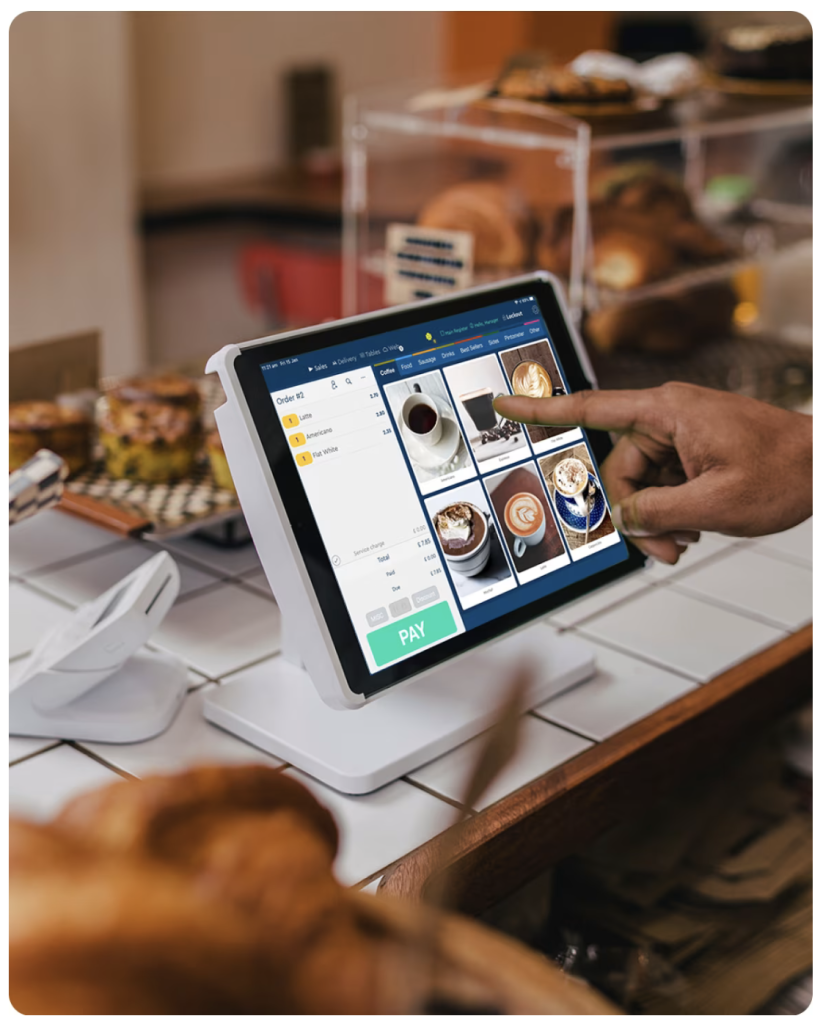A common question is what is the difference between pos and epos. POS stands for ‘Point of sale’ whilst EPOS stands for ‘Electronic point for sale’.
Both words are used in the industry for the same thing. Giving you a till system that can cope with sales, transactions, reports and more. We’ll look into the main difference when it comes to comparing a Basic (cash register) POS to a modern EPOS system.
Companies like Sum Up will use the word POS as a general term but essentially this is an EPOS system due to its features.

Transitional POS system
A traditional POS is essentially the hardware and software you need to take transactions in a workplace. This typically includes a cash register, receipt printer, and software to process payments. If you think of this as the most simple way to process a transaction. Your timeline would be to input the sale amount until your till, print a receipt, and take a card payment or cash from the customer.
A traditional POS system is often used for a single store and it may not be connected to the internet. Data is saved onto a system and not in the cloud (which can be accessed online anywhere).
Integrations – Traditional POS systems do not provide integrations to various other apps and software which gives limited scope for your business.
Modern EPOS systems
When it comes to the main difference between POS and EPOS we would say its essentially having a clever till system. An EPOS till will bring your data together for reporting, accept integrated payments (no need to manually input) and integrate with apps such as accounting software and email management. Epos will work out more expensive than getting a traditional cash register but the benefits generally highly outweigh the cost.
An epos till will give you scope to expand your business and to be able to integrate your till into multiple stores/warehouses.
Sales
Items will be displayed in an easy format on a digital screen (usually a tablet or ipad) with an easy way to select products by a menu or barcode. Upon taking payment you will be able to capture customer data and be able to take payments with an integrated card machine. Most epos systems such as epos now will feature certain pop up messages that will instruct the cashier to upsell or remember to discuss certain things. (such as would you like x product for £1 today)
Reporting
A huge benefit of an EPOS till is to be able to run a range of reports to give you an accurate insight into your business. All products on your till will have cost and sale prices so your reports will reflect profit margins. These reports can be spit into day, week, months or years. Reporting can also be used to manage inventory levels and be able to see low, popular or not selling stock.
Inventory Management
You will be able to manage your inventory accurately by inputting stock levels, cost and sale prices and variations. Items can have pictures that will link to ecommerce and even have multiple products combined into one (such as gift hampers).
Integrations
to be able to expand and automate your business more the difference between pos and epos in these integrations will help you to link software together. The integrations help you to streamline processes and to help customer retention. A a few examples of this would be:
– Integrate your sales with reporting software such as quickbooks so you can pull sales date straight over, saving you time with manual entry and tedious tasks. Along with pulling over your bank transactions this will save you hours of time.
– Link your customers to mail management software systems such as mailchimp. Upon a sale you will be able to automatically send out a follow email to your customer to check they are happy with their purchase or to request feedback.
Final Thoughts
To summarise everything, essentially getting an epos system streamlines your workflow in a way that saves you time and effort. Yes setting up takes a bit of setting up and cataloging products but after this is done you will be able to efficiently take sales, run reports that will help you keep track of your business and integrate other software providers. Combining everything will eliminate manual entry and mistakes. Free epos solutions are available but sometimes paying that little bit extra will help you massively in the long run.
